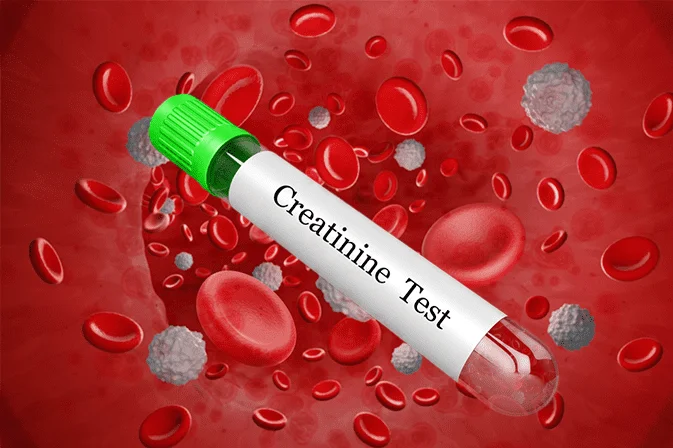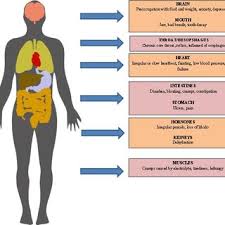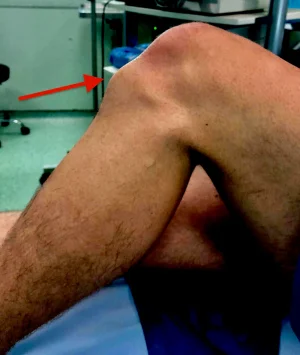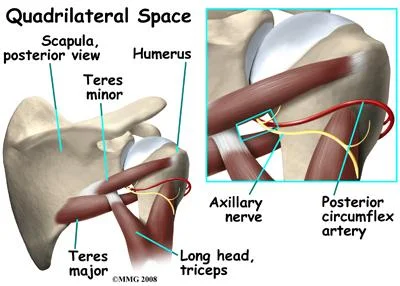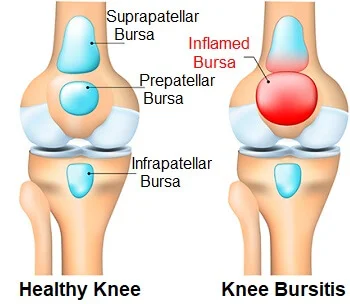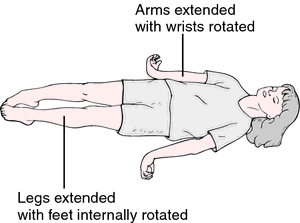High Creatinine Levels
Table of Contents
Introduction
High creatinine levels can indicate a range of underlying health conditions, involving kidney infection and kidney failure. Doctors usually consider high creatinine levels to be above 1.2 milligrams per deciliter (mg/dL) for males and 1.0 mg/dL for females.
Muscles produce creatinine as a waste product. The kidneys remove creatinine from the blood and expel it through the urine in a healthy body. High levels of creatinine can indicate kidney matter.
We explore what creatinine is and what can create high levels. We also look at symptoms of high creatinine, when to worry about creatinine levels, and the treatment choice.
What are normal high levels?
The various hospitals and laboratories may have various thresholds for creatinine that specialists deem to be normal.
The normal range for serum creatinine is 60–110 micromoles per liter (mcmol/l) for men and 45–90 mcmol/l (0.5–1.0 mg/dl) for women, or 0.7–1.2 mg/dl and 0.5–1.0 mg/dl, respectively, according to the British Medical Journal.
If creatinine is above these levels, doctors could consider it high.
However, their opinion will depend on someone’s muscle mass and certain other factors, such as age, sex, and hydration levels.
What is Creatinine?
A byproduct of regular muscle activity is creatinine. As an energy source for the muscles, it is a metabolite of creatine phosphate.
The levels of creatinine in an individual increase with muscle mass. For this excuse, males tend to have higher creatinine levels than females.
The primary method by which the body removes creatinine from the blood is by filtration through the kidneys and then excretion in the urine.
How to check the Creatinine test?
A creatinine test is a measure of how well your kidneys execute their job of filtering waste from your blood.
Creatinine is a chemical compound left over from the energy-producing method in your muscles. Healthy kidneys excrete creatinine from the blood. Creatinine leaves your body as a waste product in urine.
A measurement of creatinine in your blood or urine provides an idea to help your doctor determine how well the kidneys are working.
Why it’s done
Your doctor or other health care provider could order a creatinine test for the following reasons:
- To create a diagnosis if you have signs or symptoms of kidney disease.
- To screen for kidney disease if you have diabetes, high blood pressure, or other conditions that raise the risk of kidney disease.
- To monitor kidney disease treatment or development.
- To monitor for side effects of drugs that may involve kidney damage or altered kidney function.
- To keep track of a kidney transplant’s performance.
How you prepare
A standard blood test is applied to measure creatinine levels in your blood (serum creatinine).Before the test, your doctor might advise you to fast (not eat) the night before.
For a creatinine urine test, you could be required to collect urine over 24 hours in containers provided by the clinic.
For either test, you may be required to avoid eating meat for a certain period before the test. If you take a creatine supplement, you’ll likely be required to stop use.
What you can expect
A member of your healthcare team draws blood for a serum creatinine test by puncturing a vein in your arm with a needle.
For a urine test, you’ll be required to give a single sample in the clinic or collect samples at home over 24 hours and return them to the clinic.
Results
Results from creatinine in blood or urine are measured and checked in many methods, involving the following:
Serum creatinine level
Normally, your bloodstream absorbs creatinine and filters it out at a rather steady pace. Your blood’s creatinine level ought to be quite constant. Increased creatinine levels could indicate inadequate renal function.
The units of measurement for serum creatinine are micromoles per liter of blood (micromoles/L) or milligrams per deciliter of blood (mg/dL). Serum creatinine typically ranges between:
- The range for male adults is 6.54 to 119.3 micromoles/L or 0.74 to 1.35 mg/dL.
- For adult females, the range is 0.59 to 1.04 mg/dL (52.2 to 91.9 micromoles/L).
Glomerular filtration rate (GFR)
The measure of serum creatinine could also be used to assess how quickly the kidneys filter blood (glomerular filtration rate). Because of variability in serum creatinine from one person to another, the GFR could provide a more accurate reading of kidney function.
The serum creatinine count and additional variables like age and sex are factored into the formula used to calculate GFR. A GFR score below 60 recommends kidney disease. The range of scores below 60 could be used to monitor treatment and disease progression.
Creatinine clearance
The ability of the kidneys to remove creatinine from the circulation for excretion in urine is measured by a process called creatinine clearance.
The measurement of creatinine in a 24-hour urine sample and a blood sample collected at the same time are typically used to calculate creatinine clearance. However, shorter time periods for urine samples could be used. correct timing and collection of the urine sample is significant.
Creatinine clearance is related to milliliters of creatinine per minute per body surface area (mL/min/BSA). For men, the usual range is 77 to 160 mL/min/BSA, with a range of 19 to 75 years.
The following is the usual range for women’s creatinine clearance, broken down by age:
- For ages 18 to 29: 78 to 161 mL/min/BSA.
- Ages 30 to 39: 72 to 154 mL/min/BSA.
- 40–49 years old: BSA = 67–146 mL/min.
- 50–59 years old: BSA = 62–139 mL/min.
- 56–71 years old: 56–131 mL/min/BSA.
For elderly persons, no standard measurements have been established.
Results lower than the typical range for your age group could be a sign of poor kidney function or conditions that affect blood flow to your kidneys.
Albumin/creatinine ratio
The albumin/creatinine ratio is another method to evaluate the urine creatinine count. Blood contains the protein albumin. There should be little to no albumin in the urine because healthy kidneys normally don’t filter it out of the blood.
The albumin/creatinine ratio relates to how much albumin is in a urine sample relative to how much creatinine there is. The amount of albumin in milligrams (mg) for each gram (g) of creatinine is how the results are expressed. The following findings point to a healthy kidney:
- Less than 17 mg/g for adult males.
- Less than 25 mg/g for adult women.
Renal illness could be indicated by a higher-than-usual result. The outcome specifically could point to a diabetic kidney disease condition known as diabetic nephropathy.
The findings of a creatinine test will be discussed with you by your physician or other healthcare practitioner, who will also assist you in understanding the implications of the data for a diagnosis or course of therapy.
What Abnormal Results Mean
A higher-than-normal level could be due to:
- Blocked urinary tract.
- Kidney problems, such as kidney harm or failure, infection, or reduced blood flow.
- Loss of body fluid (dehydration).
- Muscle tissue, such as the breakdown of muscle fibers (rhabdomyolysis).
- Problems during pregnancy, such as seizures created by eclampsia or high blood pressure caused by preeclampsia.
One reason a level is below average could be:
- Conditions include the muscles and nerves that lead to reduced muscle mass.
- Malnutrition.
There are many other conditions for which the test could be ordered, such as high blood pressure, diabetes, or medicine overdose. Your provider will tell you more if required.
Risks
There is little risk included with having your blood taken. The size of arteries and veins varies from person to person and from side to side of the body. It could be more difficult to draw blood from some persons than others.
Other risks associated with having blood drawn are slight but may involve:
- Excessive bleeding.
- Fainting or feeling lightheaded.
- Multiple punctures to locate veins.
- Hematoma (blood accumulating under the skin).
- infection (a small risk whenever there is a break in the skin).
How do doctors test for Creatinine levels?
Doctors get a blood sample to test creatinine levels. They then apply a formula to estimate creatinine clearance.
In some cases, they could also request that the individual collect all of their urine over 24 hours and show it to the laboratory.
The blood and urine creatinine levels can then be compared by the physician. These effects show how much creatinine the kidneys are filtering out of the body and how well they are functioning.
What causes high creatinine levels in the blood?
High creatinine levels usually show that the kidneys are not working as they should. Possible causes of this dysfunction involve:
- a kidney infection.
- inflammation of the kidney structures that filter blood is known as glomerulonephritis.
- kidney stones that block the urinary tract.
- kidney failure.
A number of other factors, unrelated to renal function, can momentarily raise creatinine levels above normal. These involve pregnancy, dehydration, and consuming large amounts of protein — either through food roots or nutritional supplements.
Exercise with high intensity can also raise blood biomarkers such as creatinine.
A person undergoing a creatinine test must let the doctor know if they are taking any medications, fasting, or adhering to a protein-rich diet.
Certain medication is possible to harm the kidneys or temporarily raise serum creatinine levels.
Some health conditions can also harm these organs, leading to raised creatinine levels. These conditions involve:
- Diabetes.
- High blood pressure
- Heart disease.
What are the symptoms of high creatinine levels?
Depending on the underlying cause, high creatinine can present with different symptoms.
Drug toxicity (drug-induced nephrotoxicity)
Some medications can cause harm to the kidneys and impair their ability to function. Among these medications are:
- antibiotics, such as aminoglycosides, rifampin, and vancomycin.
- pharmaceuticals for the heart, like statins and ACE inhibitors.
- chemotherapy drugs.
- diuretics.
- lithium.
- proton pump inhibitors.
Symptoms that go along with high creatinine and can grow rapidly may involve:
- an accumulation of fluid, especially in your lower body.
- Urine passing of low amounts.
- feeling weak or fatigued.
- confusion.
- nausea
- Dyspnea (shortness of breath)
- irregular heart rate.
- chest pain.
Kidney infection (pyelonephritis)
Urinary tract infections (UTIs) include kidney infections as a subtype. It can happen when bacteria or viruses transmit to other parts of your urinary tract before moving up into the kidneys.
If left untreated, kidney infections can cause harm to your kidneys and even kidney failure. Some kidney infection symptoms to look out for involve:
- fever
- pain that is restricted to your groin, side, or back.
- urination that’s frequent or painful.
- urine that shows dark, cloudy, or bloody.
- bad-smelling urine.
- chills.
- nausea or vomiting.
Glomerulonephritis
Glomerulonephritis develops when the parts of your kidneys that filter your blood become inflamed. Some potential causes involve infections or autoimmune diseases like lupus and Goodpasture syndrome.
Glomerulonephritis can lead to kidney injury and damage as well as kidney failure. Symptoms of the condition involve:
- high blood pressure.
- blood in the urine, which may make it show pink or brown.
- urine that rises foamy due to high levels of protein.
- fluid accumulation in the hands, feet, and face.
Diabetes
A blood sugar level that is too high is called diabetes. Kidney disease is one of the many health issues that can result from high blood sugar.
There are two types of diabetes: type 1 and type 2. Type 1 diabetes symptoms can intensify quickly, whereas type 2 diabetes symptoms typically worsen over time. General symptoms of diabetes involve:
- feeling very thirsty.
- frequent urination.
- increased appetite.
- feeling fatigued.
- blurry vision.
- hands and feet experiencing tingling or numbness.
- slow wound healing.
High blood pressure
When the force of your blood pushing against your artery walls is too great, you get high blood pressure. This can harm or weaken the blood vessels around the kidneys, affecting kidney function and causing high creatinine.
As high blood pressure frequently exhibits no symptoms, a large number of people are unaware they have it. Frequently, it is found during a standard health examination.
Heart disease
Kidney function can also be impacted by heart and blood vessel conditions like atherosclerosis and congestive heart failure. These conditions can infect blood flow through the kidneys, leading to damage or loss of function.
Symptoms of atherosclerosis don’t usually happen until an artery is severely narrowed or completely blocked. The kind of artery that is impacted may also have an impact. Some general symptoms involve:
- chest pain (angina).
- shortness of breath.
- abnormal heartbeat (arrhythmia).
- feeling tired or weak.
- stroke-like symptoms, such as paralysis or difficulty speaking.
Symptoms of congestive heart failure can involve:
- trouble breathing or shortness of breath.
- feeling tired or fatigued.
- swelling in the abdomen, legs, or feet.
Urinary tract blockage
Your urinary tract can become blocked due to a variety of effects, such as kidney stones, an enlarged prostate, or tumors. When this happens, urine could accumulate in the kidneys, leading to a condition called hydronephrosis.
Symptoms of a urinary tract blockage can grow quickly or slowly over time depending on the cause. In addition to a high creatinine level, some symptoms to show out for are involved:
- pain in your back or side.
- frequent or painful urination.
- blood in your urine.
- having a weak urine stream or passing little volumes of pee.
- feeling tired or fatigued.
Kidney failure
Kidney failure refers to a reduction in kidney function and is one of the most common causes of high creatinine. It could be either acute or chronic. While the signs of chronic kidney failure worsen over time, the symptoms of acute kidney failure can appear suddenly.
Some symptoms of kidney failure to watch for involve:
- fluid retention, particularly in your lower body.
- passing low amounts of urine.
- feeling weak or fatigued.
- headache
- confusion.
- nausea.
- trouble sleeping.
- muscle cramping.
- feeling itchy.
- shortness of breath.
- chest pain.
How Are High Creatinine Levels Diagnosed?
Usually, blood samples or urine are collected to decide the levels of creatinine.
Blood Creatinine Test:
In this test, blood is collected from the vein in the arm and is diagnosed for creatinine levels. The serum creatinine test is another name for it. High creatinine levels are defined as those that fall outside of the normal range.
Urine Creatinine Test:
Either a single urine sample is collected, or a 24-hour sample could be collected. Urine must be collected for a full day in order to provide a 24-hour sample.
Calculations are made to determine the levels of creatinine in the blood and urine.
How Is High Creatinine Level Treated?
The underlying reason for elevated creatinine levels determines the course of treatment.
If elevated creatinine levels are caused by a kidney infection, antimicrobial therapy should bring them back to normal.
Likewise, if the raised creatinine levels are due to high blood pressure, taking medication to treat this should also lower creatinine levels.
Depending on the cause, doctors may also suggest making changes to everyday habits, such as decreasing protein intake and increasing dietary fiber. Such adjustments may assist someone in managing their creatinine levels.
The underlying cause of elevated creatinine levels determines the course of treatment. Prior to treating elevated creatinine levels, the underlying cause must be found and dealt with.
If high creatinine levels are created due to kidney infection, then it could be treated with antibiotics.
If high creatinine levels are created by high blood pressure, then antihypertensive drugs should be prescribed to treat the cause.
There are some lifestyle changes that doctors could suggest, along with treating the cause. Such as:
- Reducing protein intake.
- Raise the intake of dietary fiber.
- Drinking plenty of water as dehydration can raise creatinine levels.
- Avoid smoking.
- Avoiding excessive consumption of alcohol.
- Avoiding overuse of NSAIDs (nonsteroidal anti-inflammatory drugs).
Summary
The blood’s level of creatinine may rise if the kidneys are not working properly. Several factors can produce high creatinine levels.
These variables include things like prescription drugs, food, and underlying medical issues. Levels need to stabilize after the underlying issue has been resolved.
Anyone exhibiting any signs of elevated creatinine levels ought to consult a physician. Early intervention can reduce the risk of kidney damage and improve the chance of full recovery.
FAQs
If I have a high creatinine, what should I do?
A person should typically pay attention to their kidney health if they have high creatinine levels. Seeking medical advice is advised for anyone exhibiting any symptoms related to elevated creatinine levels.
What causes elevated creatinine levels most frequently?
High creatinine levels could be a sign of abnormal kidney function. However, other factors can temporarily increase creatinine levels, involve dehydration and high protein consumption.
What level of creatinine is alarming?
High levels of creatinine are defined as more than 1.0 mg/dl for females and more than 1.2 mg/dl for males. Nonetheless, a person’s creatinine level result shouldn’t cause them concern. A person’s kidney health cannot always be fully determined by this test alone.
Why do I need a creatinine test?
You could require- this test if you have symptoms of kidney disease. These involve:
Fatigue.
Puffiness around the eyes.
Swelling in your feet and/or ankles.
Reduce appetite.
Frequent and painful urination.
Urine that is foamy or bloody.
Is there anything more regarding a creatinine test that I should know?
Additionally, your physician might request a creatinine clearance test. The levels of creatinine in blood and urine are compared in a creatinine clearance test. When compared to a blood or urine test alone, a creatinine clearance test may yield more precise information about kidney function.
Which Foods Should I Avoid When My Creatinine Is Raised?
Cooked red meat contains creatine which on heating makes creatinine. Thus, it is best to stay away from cooked red meat. Dairy and fish products should also be avoided due to their high creatinine content.
What Levels of Creatinine Symbolize Kidney Malfunction?
A level of creatinine greater than 1.3 mg/dL is regarded as high. Exceeding 5.0 mg/dL in adults and 2.0 mg/dL in infants, on the other hand, is deemed abnormally high and indicates a severe kidney disorder.
What Does an Increased Creatinine Level Indicate?
Increased creatinine levels are an indicator of kidney failure or damaged kidney function. The kidney assists in clearing the level of creatinine in blood by excreting it. If these kidneys lose their function due to kidney failure, the creatinine is retained, increasing its levels in the blood.
Is High Creatinine a Problem of Concern?
Raise creatinine levels are an alarming sign of kidney failure or damaged kidney function, which requires immediate medical intervention.
Can High Creatinine Levels Be Reversed?
If lifestyle activities, food, or medication are the cause of the elevated creatinine levels, then changing one’s diet, quitting smoking, and altering one’s lifestyle will all help lower the creatinine levels.
Is Water Consumption Able to Reduce Creatinine Levels?
Although drinking water assists in reducing the level of creatinine in the blood, it is not of much assistance in treating the underlying kidney disease. Consequently, it is not a good idea to push yourself to drink a lot of water.
How Can We Reduce Creatinine Levels?
Avoiding red meat.
Drinking adequate water.
Limiting the intake of protein.
Consuming a fiber-rich diet.
Decrease salt intake.
Avoiding NSAIDs.
Avoiding alcohol and smoking.
When Is Dialysis Necessary Based on Creatinine Level?
Dialysis is needed if the creatinine levels are highly raised above 5.0 mg/dL, and kidney function goes below 15%.
Which medications raise the levels of creatinine?
Serum creatinine levels are raised by cimetidine, pyrimethamine, trimethoprim, phenacemide, corticosteroids, salicylates, and active vitamin D metabolites without affecting glomerular filtration or kidney function.
What Food Is Suggested if Your Creatinine Levels Are High?
Fiber-rich foods like fruits, vegetables, whole grains, seeds, and adequate water intake are the suggested diet for raising creatinine levels.
Which Fruit Helps Keep Creatinine Levels Up?
Grapes, apples, and cranberries are fruits that can be taken when the creatinine level is raised because they have low potassium.
What happens if creatinine is high?
The kidneys filter out creatinine, a waste product that is produced by the muscles. The reason your blood test result was flagged is that elevated blood creatinine can indicate compromised kidney function.
What does a 1.5 creatinine level mean?
The high creatinine level of 1.5 indicates that you may have kidney problems. To determine whether you have an acute or chronic kidney condition, you should get more clinical information before undergoing further tests such as a kidney USG scan, routine urine analysis, and urine protein estimation.
Should I worry about a 1.4 creatinine level?
Your age, sex, and body mass percentage will determine what normal levels are for you. Typically, elevated creatinine levels—more than 1.2 for women and more than 1.4 for men—may indicate abnormal kidney function.
What does a 1.9 creatinine level indicate?
A normal level of roughly 1.8 or 1.9 may be reached by an individual with only one kidney. A dialysis machine could be required to remove waste products from the blood if a baby’s creatinine level reaches 2.0 or higher or an adult’s level reaches 10.0 or higher.
Which five stages of creatinine-related renal failure exist?
Chronic kidney disease has five stages
Stage 1: GFR > 90 mL/min, either normal or high.
Mild CKD in Stage 2 (GFR = 60-89 mL/min)
Moderate CKD, Stage 3A (GFR = 45–59 mL/min)
Stage 3B of moderate CKD (GFR = 30-44 mL/min).
Severe CKD in Stage 4 (GFR = 15–29 mL/min).
End Stage CKD (Stage 5; GFR <15 mL/min).
What is the biggest indicator of kidney disease?
Kidney disease is detected and tracked with blood and urine tests. The two main indicators that are currently used are persistently low estimated glomerular filtration rate (eGFR) and abnormal urine albumin levels. Determining the cause could aid in directing the course of treatment.
What causes high creatinine?
Dehydration, high protein or red meat consumption, or some medications can all result in a sudden, transient rise in creatinine. On the other hand, consistently elevated creatinine levels are a dangerous sign of renal damage. Emedema or swelling are among the signs of elevated creatinine in the body.
Should I worry about high creatinine?
The kidneys filter out creatinine, a waste product that is produced by the muscles. The reason your blood test result was flagged is that elevated blood creatinine can indicate compromised kidney function. This could lead to chronic kidney disease that is chronic.
Can high creatinine be fixed?
The levels of creatinine in the body can be lowered by consuming supplements, eating a healthy diet, and staying hydrated. The natural waste product produced by muscles is called creatinine. It is eliminated from the body by the kidneys and can be found in the urine and blood.
What is a serious creatinine level?
Severe kidney damage may be indicated by creatinine levels of 2.0 or higher in babies and 5.0 or higher in adults. Elevated creatinine levels are sometimes seen in dehydrated individuals.
Is kidney creatinine curable?
When an antibiotic is used to treat a kidney infection, elevated creatinine levels should return to normal. Similarly, taking medication to treat high blood pressure should also lower creatinine levels if that is the cause of the elevated levels.
For what purpose do the kidneys serve the body?
Dizziness and Fatigue. Feeling generally weak and unwell is one of the first potential indicators that your kidneys are weakening.
Swelling (Edema).
Changes in urination.
How can I lower my creatinine in 7 days?
Reducing your protein intake. The body requires protein, an essential nutrient, for a number of purposes.
Raise your fiber intake.
Ensure you stay hydrated.
Lowering your salt intake.
Avoid smoking.
Cut down on alcohol intake.
Don’t take additional creatine.
Try having supplements like chitosan.
How can I reduce creatinine levels?
not taking supplements that contain creatine.
decrease protein intake.
eating more dietary fiber.
staying hydrated.
limiting intense exercise.
What creatinine level requires dialysis?
The doctor can accurately determine how well the kidneys are functioning by comparing the level of this substance in the blood and urine. The creatinine clearance is the term for this outcome. A patient typically requires dialysis when their creatinine clearance drops to 10–12 cc/minute.
Can creatinine levels go back to normal naturally?
The levels of creatinine in the body can be lowered by consuming supplements, eating a healthy diet, and staying hydrated.
What are the tests for kidney disease?
A blood test known as GFR measures your kidneys’ capacity to filter blood. The term “glomerular filtration rate” is GFR. an albumin test performed on the urine. When kidneys are damaged, a protein called albumin can enter the urine.
Is there any treatment to reduce creatinine?
By avoiding certain supplements, medications, and other substances, like cigarettes, you may be able to support kidney health and lower your creatinine levels. One waste product produced by using your muscles is called creatinine. Consuming a high-protein diet may also result in trace amounts of this organic substance.
Which treatment for high creatinine is most effective?
The following measures can assist in managing elevated creatinine levels:
Stay hydrated: Water consumption in moderation can support kidney function and aid in the removal of toxins from the body.
Maintain a healthy diet: Lowering the amount of protein consumed in a balanced diet can help ease the kidney’s burden.
Who treats high creatinine?
A physician with expertise in the diagnosis and treatment of kidney disorders is known as a nephrologist. If you have any indications of kidney disease or other conditions that could harm your kidneys, you should consult a nephrologist.
Does walking reduce creatinine?
Walking or running is a more effective form of aerobic exercise for improving serum creatinine in patients with chronic kidney disease (CKD). Aerobic exercise lasting more than 30 minutes has a greater impact on the estimated glomerular filtration rate.
Reference
- Lewin, J. (2023, April 12). What should my creatinine level be? Normal ranges and causes of high and low results. https://www.medicalnewstoday.com/articles/322380#what-to-do.
- Creatinine Test – Mayo Clinic. 9 Feb. 2023, www.mayoclinic.org/tests-procedures/creatinine-test/about/pac-20384646#:~:text=An%20increased%20level%20of%20c.
- Higuera, V. (2023, February 1). Low Creatinine: What You Need to Know. Healthline. https://www.healthline.com/health/low-creatinine.
- Pushkar, P. (2023, October 5). High Creatinine Levels | Symptoms | Diagnosis | Treatment. https://www.icliniq.com/articles/kidney-and-urologic-diseases/high-creatinine-levels.
- Creatinine blood test. (n.d.). Mount Sinai Health System. https://www.mountsinai.org/health-library/tests/creatinine-blood-test.
- Creatinine Test. (n.d.). https://medlineplus.gov/lab-tests/creatinine-test/.

